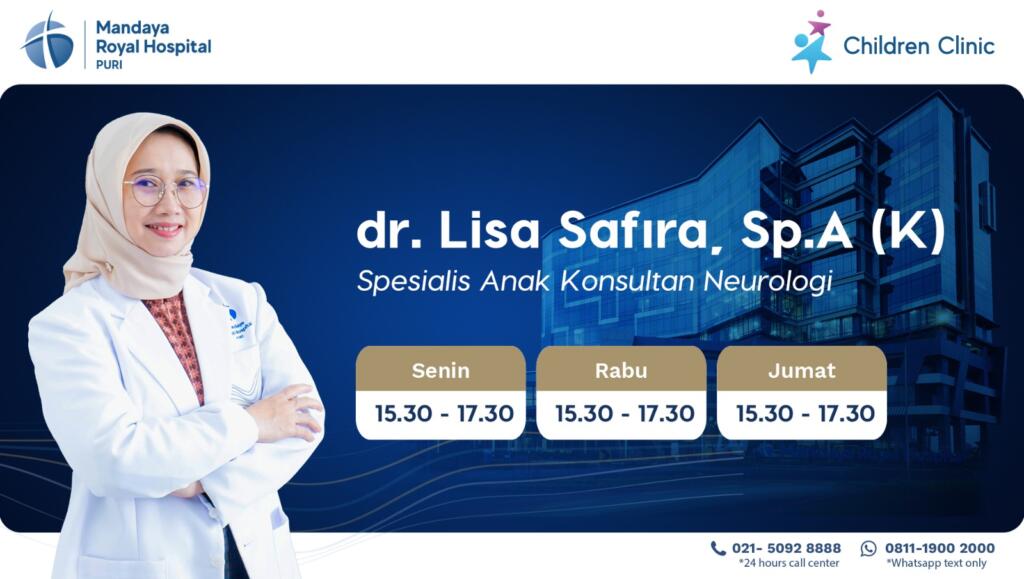Epileptic seizures in infants can cause parents to panic and feel anxious. Understanding the correct information about epilepsy in babies—including its symptoms and available treatments—can help you remain calm when faced with this condition.
Contents
What Is Epilepsy in Infants?
Epilepsy is a brain disorder that causes recurring seizures. During a seizure, there is abnormal and excessive electrical activity in the brain. This can lead to convulsions, sudden falls, or unusual behavior such as staring blankly or being unresponsive when spoken to.
Approximately 1 in 200 children have epilepsy, and 1 in 20 children experience at least one seizure during childhood. The risk of seizures is highest in the first year after birth, particularly in the first month of life.
Seizures in infants can be caused by various factors, including:
- Imbalance of neurotransmitters in the brain
- Brain tumors
- Stroke
- Abnormal brain development during pregnancy
- Genetic disorders
- Encephalitis (inflammation of the brain)
- Meningitis (inflammation of the brain lining)
- Brain damage due to oxygen deprivation, infection, bleeding, or injury
Seizures may result from any one or a combination of these causes. In most cases, the exact cause of epilepsy in infants is unknown.
Generally, epileptic seizures are not dangerous. However, infants can be at risk of injury if seizures occur in unsafe environments such as near stairs, in swimming pools, or on high surfaces.
Signs and Symptoms of Epilepsy in Infants
The symptoms of epilepsy in babies may vary depending on the type and severity of the seizure. Common signs include:
- Staring blankly at a single point
- Jerking movements in arms and legs
- Body stiffness
- Loss of consciousness
- Breathing problems or stopping breathing altogether
- Loss of bowel or bladder control
- Sudden unexplained falls
- Lack of response to sound or voices for a short time
- Appearing confused or dazed
- Rhythmic head nodding combined with other signs like loss of awareness
- Rapid blinking or unusual eye movements
During a seizure, the baby’s lips may turn blue due to breathing difficulties. The seizure episode typically ends with drowsiness, sleep, or a disoriented state.
Epileptic symptoms in infants can resemble other medical conditions. To get an accurate diagnosis, always consult a doctor.
What to Do If Your Baby Has an Epileptic Seizure
Most seizures in infants will stop on their own without treatment. However, there are steps you can take to ensure your baby’s safety during a seizure:
1. Stay Calm
Remain calm and ensure your baby is in a safe space where they can move freely without the risk of hitting objects or having anything fall on them. Make sure nothing is obstructing their breathing, and take note of how long the seizure lasts.
2. Do Not Intervene
Do not try to stop the baby’s movements or put anything into their mouth during a seizure.
3. Position the Baby for Recovery
Once the seizure ends, gently lay your baby on their side in a recovery position to keep the airway clear.
4. Take Notes
Record what happened before, during, and after the seizure. These details will be helpful when consulting a doctor.
5. Call a Doctor
Not all seizures require emergency care, but you should seek medical help if your baby:
- Has never had a seizure before
- Stops breathing or turns blue around the lips
- Experiences a seizure lasting more than 5 minutes
- Is unresponsive after the seizure ends
- Gets injured during the seizure (e.g., bumping into something or falling)
Seizures lasting more than 5 minutes require medical attention. Seizures that continue for over 30 minutes are a medical emergency known as status epilepticus, which can cause unconsciousness.
Treatment Options for Epilepsy in Infants
Here are some treatments available to help manage epilepsy in infants:
1. Medication
Anti-epileptic drugs are the most common treatment for epilepsy in babies. While they do not cure epilepsy, they can reduce the frequency and severity of seizures.
2. Surgery
Brain surgery may be considered if medication is ineffective and tests show that seizures originate from a specific area of the brain. Surgery will only be performed if it’s safe to treat that area without causing further complications.
3. Vagus Nerve Stimulation (VNS)
If seizures occur very frequently, vagus nerve stimulation may be used alongside other treatments like medication. This therapy involves implanting a device similar to a pacemaker under the skin near the collarbone, connected to the vagus nerve in the neck.
The device periodically stimulates the nerve to help reduce seizure frequency and severity. It usually takes about a year to see noticeable improvements.
Some babies may stop having seizures as they grow older, while others may continue to experience them into adulthood. It depends on when the seizures started, their type, and how the baby responds to treatment.
If you have any concerns or questions about epilepsy in infants, don’t hesitate to consult a doctor.
Pediatric Neurology Specialist at Mandaya Royal Puri Hospital

Mandaya Royal Puri Hospital has a pediatric neurologist who specializes in managing seizures in infants: dr. Lisa Safira, Sp.A(K).
She is an expert in diagnosing and treating a wide range of brain and nervous system disorders in children, including epilepsy, brain infections like meningitis, autism spectrum disorder, ADHD, and speech and motor skill disorders.
Educational Background of dr. Lisa Safira:
- General Medicine: Universitas Brawijaya
- Pediatric Specialist: Universitas Indonesia
- Postgraduate Program in Pediatric Nutrition: Boston University
- Pediatric Neurology Subspecialist: Universitas Indonesia
Conditions and procedures handled by dr. Lisa include:
- EMG (Electromyography)
- EEG (Electroencephalogram)
- Epilepsy
- Movement disorders
- Brain infections such as meningitis
- Speech & motor skill delays
- ADHD spectrum
- Childhood autism
- Duchenne Muscular Dystrophy (DMD)
- Spinal Muscular Atrophy (SMA)
- Pediatric Myasthenia Gravis
To make your visit to Mandaya Royal Puri Hospital easier, you can use the Chat via WhatsApp, Book Appointment, or download the Care Dokter app on Google Play or the App Store to view queue numbers and access other important information conveniently.



